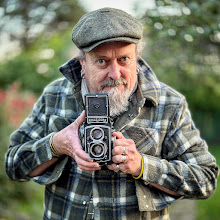
nevard_110406_BQ_colours_IMG_9599_web, originally uploaded by nevardmedia.
I frequently get asked what colours I use. The trick I think is to avoid anything too bright and certainly don't use manufactured 'railway colours', they're always too bright and lurid.
Here are the colours used on Brewhouse Quay and Catcott Burtle - they're all Humbrol or Revell matt enamel. I tend to dry brush them onto a grey/brown undercoat (Halfords aerosol primers). You'll notice I also use enamel rather than acrylic, enamel is easier to 'work' and can still be manipulated when almost dry.
Humbrol Matt Enamel
- 34 White (for window frames)
- 62 Leather (rust and iron staining and some brickwork)
- 101 Mid Green (for newish BR Southern Region building green)
- 120 Light Green (for sun bleached BR Southern Region building green)
- 121 Pale Stone (for stonework)
- 147 Light Grey (for stonework)
- 250 Desert Pink/Sand (for stonework)
- 32116 Sandy Yellow (for stonework)
- 32174 Gunship Grey (for stonework/cobbles and slate roofs)
- 32187 Earth Brown (for stonework and general weathering)
- 32188 Ochre Brown (for stonework, particularly Bath stone)
The stone colours tend to be blended randomly using the dry-brush technique. Real stone is a mix of many colours, feather the colours rather than use different blocks of solid colour which will tend to create a crappy 'painting by numbers' effect. As with everything, there are no rules, also be sure to look at the real world rather than other people's models for inspiration.
I also have a couple of bottles of emulsion based colour washes, one dark (browny/grey) and one light (sandy/beige), these are used as washes after all other painting. They add further patina, and being water based will not react with the enamel underneath.


Interesting. I prefer using 147 for white most of the time but I can see the benefit of using it for light stone too. The trick is (IMHO) to not let colours dry properly before dry-brushing the next layer on. That way they mix ever so slightly but in interesting ways.
ReplyDelete